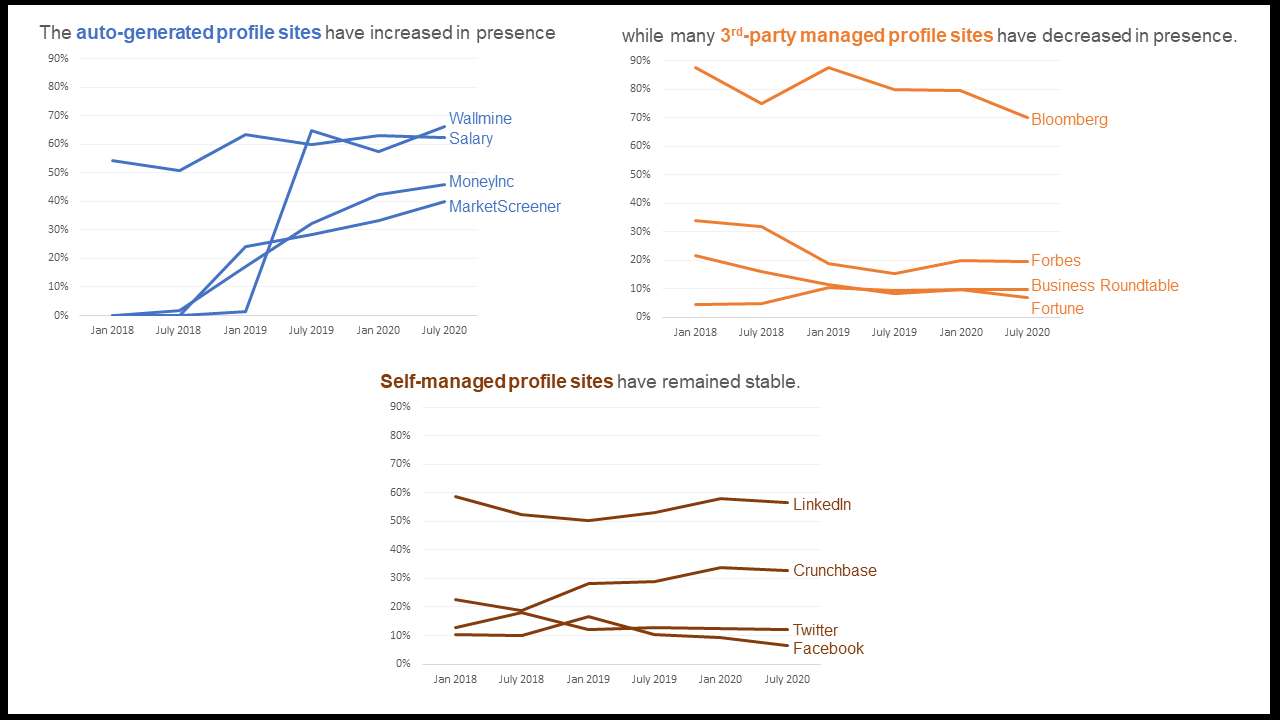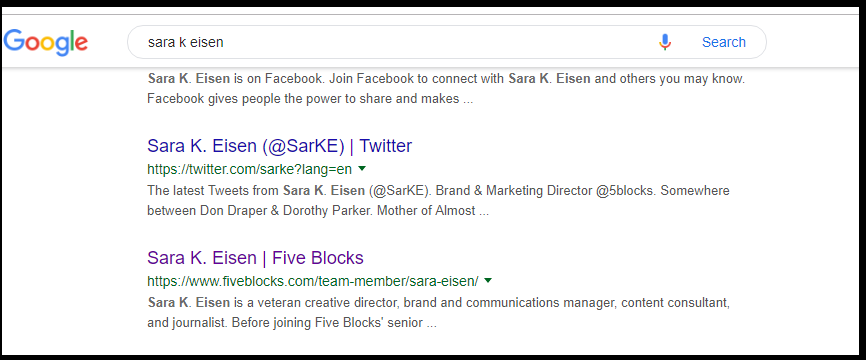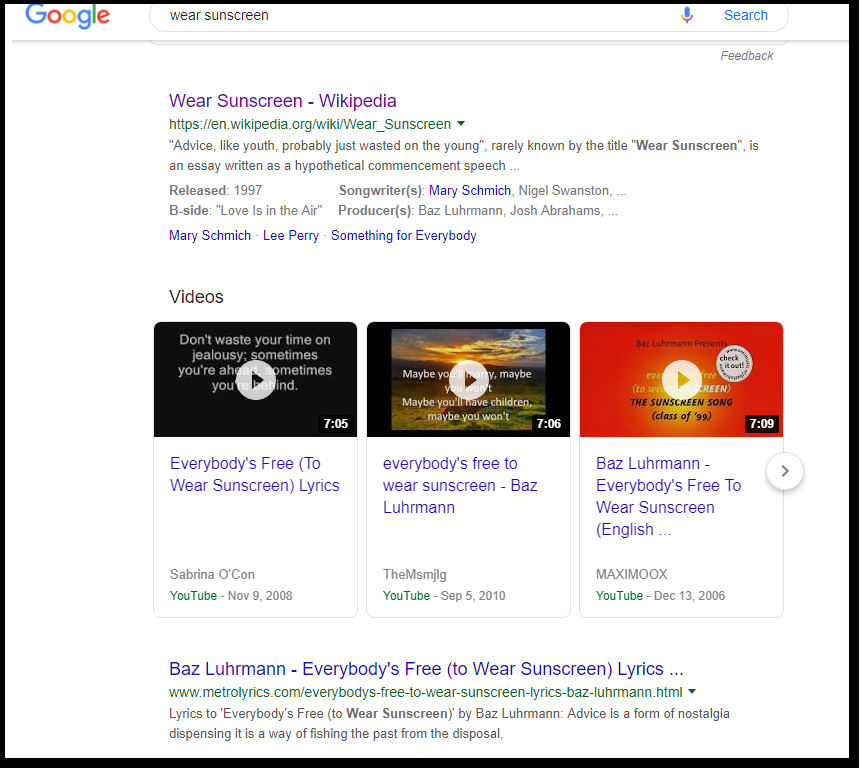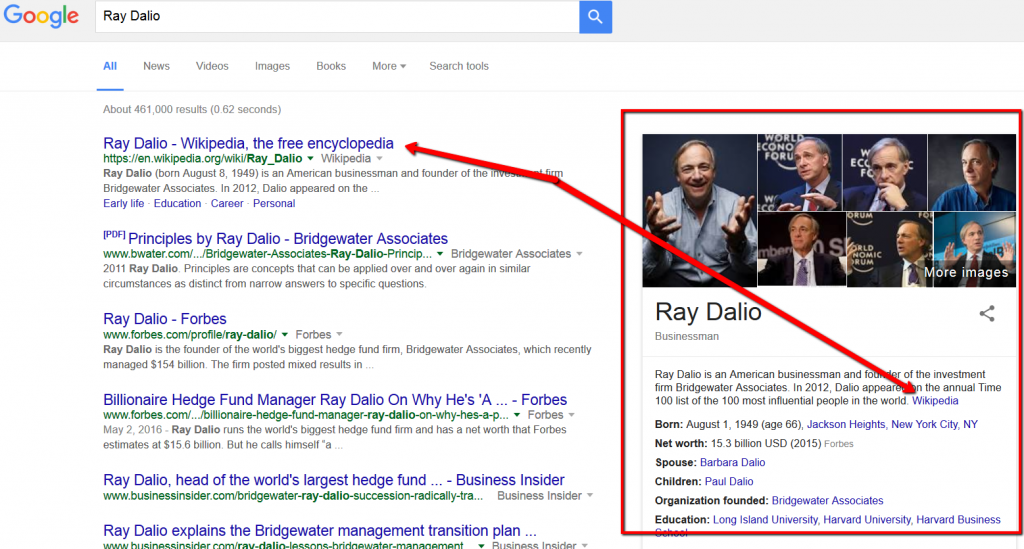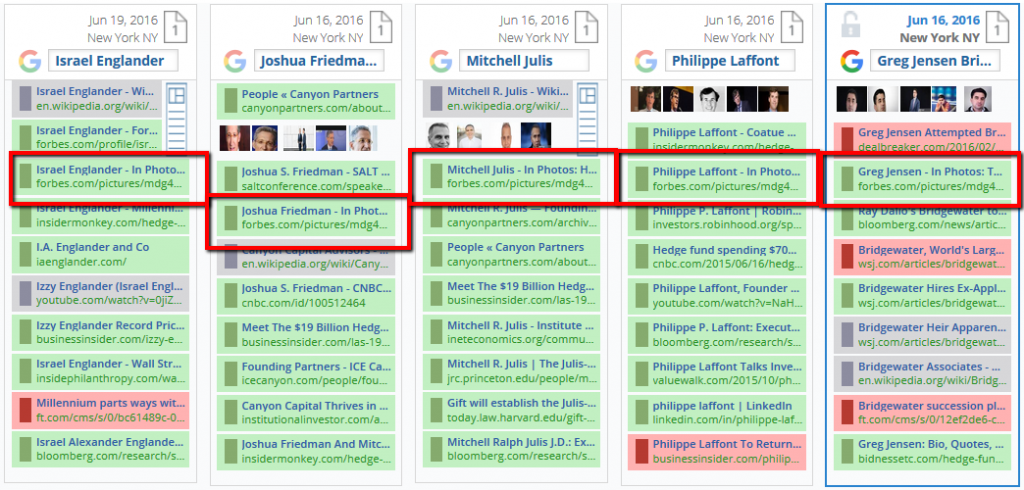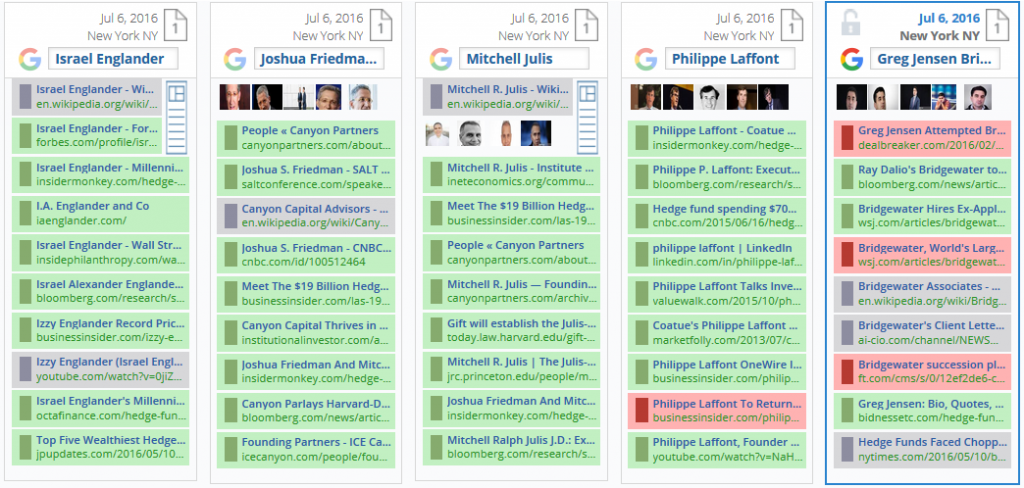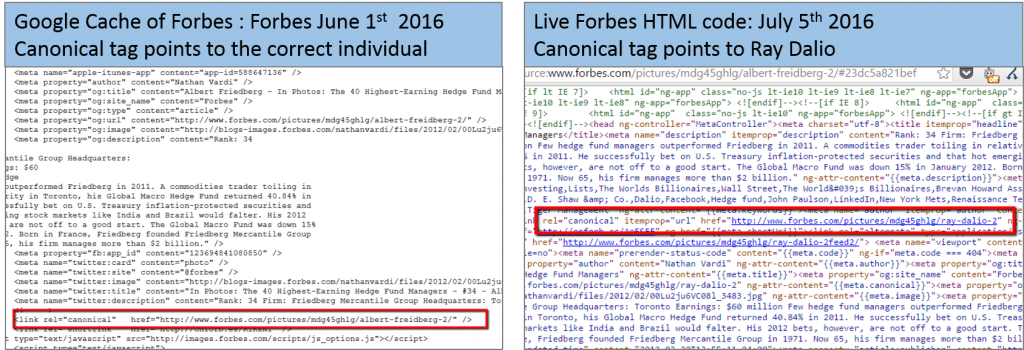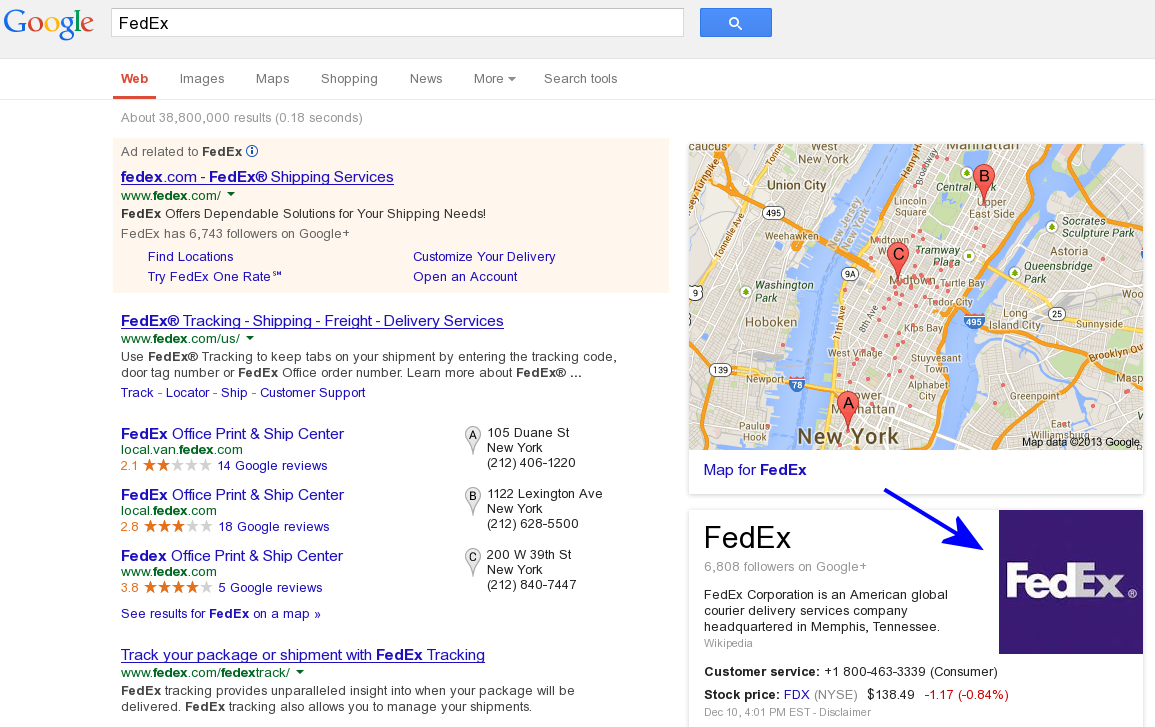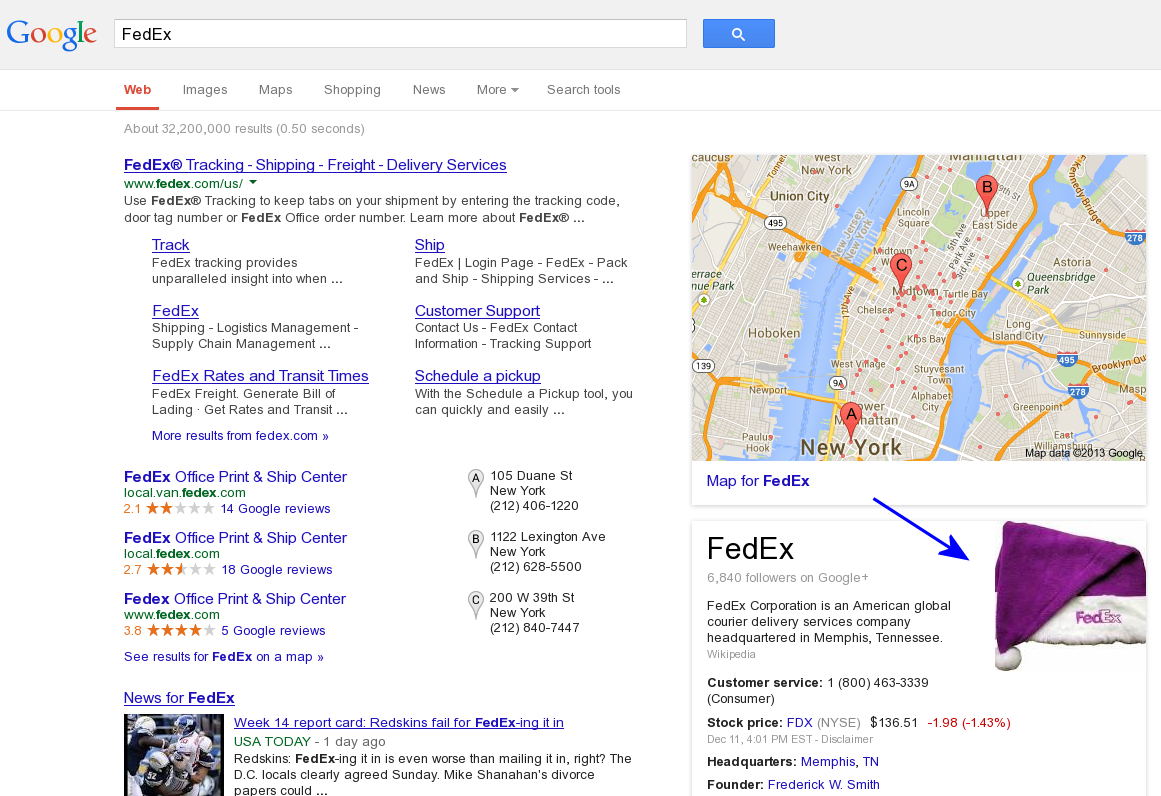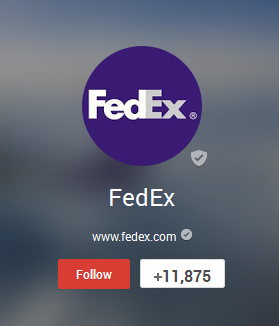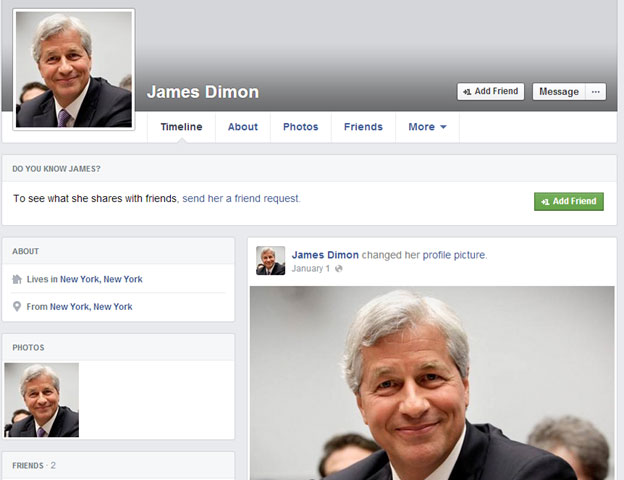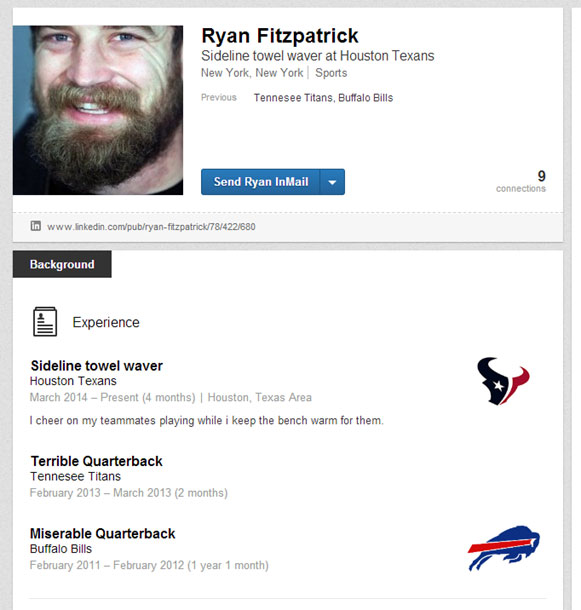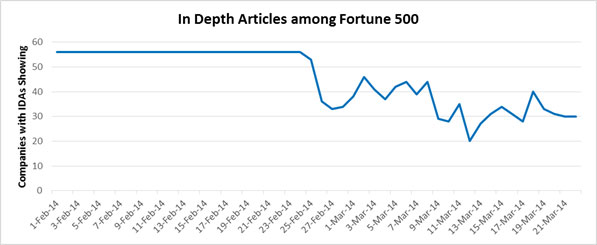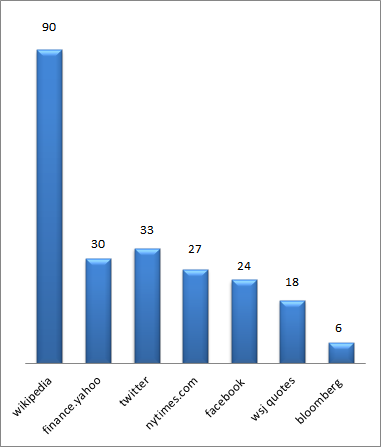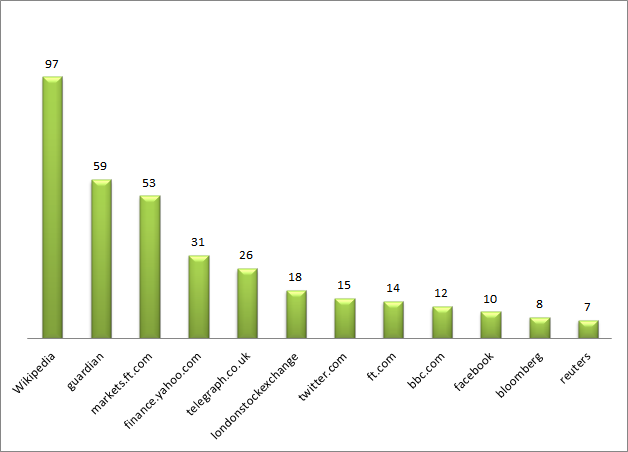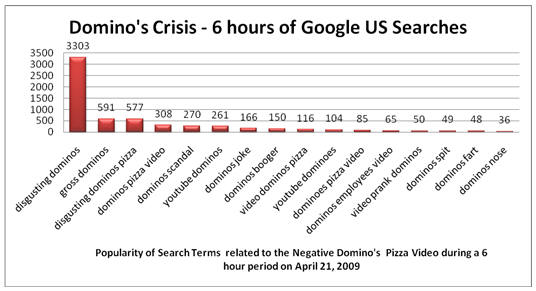Can you edit your or your company’s Wikipedia page?
LAST UPDATED – October 2025
Wikipedia Editing for Companies: Best Practices and Considerations
One of the most common questions we get regarding Wikipedia is whether a company can edit its own page.
The short answer is – it’s complicated, and there are important guidelines to follow.
Wikipedia’s Stance on COI – Conflict of Interest
Wikipedia’s purpose is to provide an encyclopedia of impartial knowledge. Content that is promotional, self-serving, or biased will often get flagged or removed by other editors.
Wikipedia’s official policy states:
“You are discouraged from writing articles about yourself or organizations (including their campaigns, clients, products and services) in which you hold a vested interest.”
In essence, editing the Wikipedia page about your own company is discouraged, as Wikipedia aims to ensure its content remains unbiased.
The Risks of Undisclosed Editing
It’s crucial to understand that:
- Wikipedia editors frown upon and may penalize pages that appear to have been edited by the company without transparency.
- Your IP address is recorded and visible to others. Never attempt to edit anonymously using a company-owned IP address.
- The Wikipedia editor community actively tracks changes. Your edits can trigger alerts for engaged editors, who may swiftly revert or challenge your modifications.
Free Consultation regarding your brand’s Wikipedia challenge: Contact Us
The Gold Standard: Disclosed Conflict of Interest (COI) Editing
Over the past few years, a new approach to Wikipedia editing has emerged, known as “disclosed conflict of interest” editing. This method is now considered the best practice for companies seeking to improve their Wikipedia presence. Here’s how it works:
- The company or individual creates a Wikipedia user account.
- They disclose their connection to the subject of the article on their user page or the article’s talk page.
- Instead of directly editing the article, they suggest changes on the talk page, providing reliable sources to support their proposals.
- Independent Wikipedia editors review these suggestions and implement them if they meet Wikipedia’s guidelines.
This approach aligns with Wikipedia’s values of transparency and allows companies to advocate for fair representation while respecting the platform’s rules.
Why Choose Disclosed COI Editing?
- It’s compliant with Wikipedia guidelines, avoiding the risks associated with undisclosed editing.
- It allows for more aggressive advocacy on behalf of your brand, as you’ve already informed the community of your connection.
- It typically leads to better long-term outcomes and a more stable Wikipedia presence.
How We Can Help
At Five Blocks, we specialize in navigating Wikipedia’s complex landscape for our clients. Our services include:
- Notability Analysis: Determining whether an entity has the required coverage for Wikipedia editors to accept and publish a new article.
- Current Page Analysis: Reviewing challenges and opportunities with existing content and sources.
- Content Planning and Drafting: Preparing content and sourcing for potential Wikipedia inclusion.
- Community Engagement: Working with the Wikipedia editor community to review and submit proposed changes via the appropriate talk pages.
- Vandalism Monitoring: Utilizing tools to monitor Wiki pages so that swift action can be taken when needed.
- Foreign Language Pages: Assisting in creating Wikipedia pages in other languages, following the specific guidelines for each.
Free Consultation regarding your brand’s Wikipedia challenge: Contact Us
Important Considerations
- Wikipedia’s editing guidelines are far more intricate than they may appear. The sources, writing style, and editor interaction require significant experience to manage effectively.
- Timing is crucial. Introducing a Wikipedia page in advance of a potential crisis may be beneficial, while doing so during a crisis could backfire.
- Building a positive Wikipedia presence takes time and patience. It’s a long-term strategy that requires consistent effort and adherence to Wikipedia’s principles.
Ready to Improve Your Wikipedia Presence?
If you’re looking to create or improve your company’s Wikipedia page, we offer free consultations to discuss your options and determine the best approach for your specific situation. Our team of experts can guide you through the process of disclosed COI editing, ensuring compliance with Wikipedia’s guidelines while working towards your goals.
Free Consultation regarding your brand’s Wikipedia challenge: Contact Us
Still have questions? See our FAQ
How do I edit an error on my company’s Wikipedia page?
While anyone can edit Wikipedia, it’s best to use the disclosed COI approach.
Best is to work with an experienced firm to suggest changes on the article’s talk page, providing reliable sources to support your corrections.
How do you create a Wikipedia page?
Wikipedia has strict standards for notability, citations, and conflict of interest. We recommend consulting with professionals to navigate these requirements and increase the chances of your page being accepted and maintained.
Can you edit your own Wikipedia page?
Direct editing is discouraged. Instead, work with an experienced team to ensure you are utilizing the disclosed COI method to suggest changes on the talk page and let independent editors implement them.
Who can edit a Wikipedia page?
Anyone can edit most Wikipedia pages, but it’s important to follow the platform’s guidelines, especially regarding conflict of interest.
Can I see who edited a Wikipedia page?
Yes, go to the ‘View History’ tab at the top right of the Wikipedia page. The username of the editor appears next to each change, along with the date.
Remember, working with Wikipedia requires patience, transparency, and adherence to the platform’s principles. By following these guidelines and best practices, you can work towards achieving a fair and accurate representation of your company on one of the world’s most visited websites.
Free Consultation regarding your brand’s Wikipedia challenge: Contact Us
Just the Facts: The rise of auto-generated profile sites, and what that means about the direction of search
People like to do quick, basic research before engaging in business. As the go-to place for that research, Google’s page 1 has become a kind of dossier about people and brands. This is why the Knowledge Panel (the summary info that typically appears on the top right part of the Google search results page) has become the gold standard for quick stats of notable individuals. It’s also why the People Also Ask box, with its quick and easy question and answer format, has been pushed front and center by Google. It’s as if searchers have repeatedly said to Google, “Just the facts, Ma’am,” and Google has complied.
Typically, results for top CEOs will include their Wikipedia page, their company’s website, top news stories, and various types of profile sites, which provide a quick snapshot of facts for users.
(Note: Perhaps the most interesting data point for many searchers is CEO salary: we found this in a previous study we did on the People Also Ask box. 22% of all questions appearing for Fortune 100 CEOs relate to their salaries.)
We recently surveyed Google results for Fortune 500 CEOs over three consecutive years (on the same dates) to assess the changing prominence of different kinds of profile sites in their top results.
We found that self-managed profile sites – LinkedIn, Twitter, and Facebook (in addition to Crunchbase, which can be self-managed) – have remained more or less stable in terms of their prevalence on page one for CEOs.
At the same time, third-party profile sites, like Bloomberg, Forbes, Fortune, and Business Roundtable have slightly decreased in page one presence for CEOs over the years. Bloomberg, for example, appeared in page 1 search results for nearly 90% of these CEOs through early 2019; today that’s down to 70%.
The sites that have risen in prominence are auto-generated profile sites, which pull relevant information from multiple websites and databases to create a one-page dossier on executives. These sites, namely Wallmine, Salary, MoneyInc, and MarketScreener, have significantly risen in prominence over the years. Wallmine in particular saw a meteoric rise in 2019 – from appearing for just 1% of CEOs to 65% of them within that same year.
What is interesting about this trend toward automatically created “scraper” sites is that they don’t seem to add a whole lot of value. What are they doing that Google cannot do by itself? Google’s algorithm already tends to prioritize pages and sites that help it answer popular questions and meet the common need for quick facts. Google does this by crawling much of the internet and then displaying the best pages and data points.
When companies do the same type of summarizing, this can be useful to visitors…but only for a time.
Some years ago we saw the same dynamic play out with Answers.com. In order to answer questions people often searched online, that site scraped various authoritative sources and created answer pages – which ranked prominently for tens of thousands of terms. Eventually, though, Google applied a more sophisticated duplicate content filter, demoted Answers.com, found other sites that added more original value, and added its own “dossier” features as discussed above. Answers.com simply wasn’t adding enough value to last long term.
So while right now there are several automatically generated profile websites appearing for many prominent individuals, some of which can actually be managed to some extent (MarketScreener offers an option for a paid profile, for example), we predict that these sites will not retain their prominence long- term.
In our estimation, for a site to remain relevant and prominent in Google search, it needs to add unique value, providing information or an experience that other sites do not…and that Google can’t manage on its own with its own knowledge graph data.
Ideally, sites that want to go the distance should be filling a gap – providing some deeper answers to the popular questions people have, adding images or videos where those are missing to flesh out someone’s persona, or providing information in a language that is not covered.
Google is a reflection of what people want to see, and people seem to want to see a quick and comprehensive picture. Staying valuable will require a heavier lift for content writers and researchers. The robots – the automated content aggregators – will need to find some other, more helpful, work to do.
About the author:
Miriam Hirschman., Research Manager at Five Blocks, is driven by an endless supply of curiosity and a deep background in data analysis as she digs for the interesting stories behind the numbers. Because we believe in data and tools but believe in people even more, she reviews massive volumes of search results, seeking patterns and finding order in the often chaotic world of web search.
Executives: How to SPF (Search Protection Factor) Your Summer
“Wear sunscreen.”
This iconic advice (given by a “commencement speaker” in Baz Luhrmann’s song from the late 90’s) has become code for the following wisdom:
Life is complicated in unexpected ways, but there are some simple, basic things you can do to avoid an unnecessary crisis. At least that.
This summer, you’ll wear sunscreen to protect your health and your youth – but what (or who) is protecting your digital reputation?
As you Instagram your way through the islands, blog a path through the whiskey bars of Europe, or get tagged by your friends at so-and-so’s pool party, what movement will be taking place on that great portal to your reputation we call Google? Who would you like to be seen as? Who would you like to be seen with? These things are far more in your control than you might think.
Since your reputation is at least as valuable to you as the luggage you insure before your flight, we’d like to state a few (perhaps obvious) tips before your vacation becomes a liability:
- Twitter: If you tweet frequently, your Twitter feed (and, if you are a superstar, the tweets themselves) are likely to rank on Google page one, especially if your tweets are your original content. Make sure the things you tweet are not just fit for your followers on that medium, but for everyone who may be searching for you on Google.
- Images: You may want to change your Facebook profile picture to the new one of you with the great tan and six pack (and also beer), imagining that only your friends will see it. Keep in mind, though, that your profile pictures will tend to rank in a Google search of your name, or your company’s. Which of your “assets” should your investors and board members see?
- Video: Google often provides searchers with a “video carousel” placed within organic search results, if a relevant video is available. Make sure the videos which will appear when searching your name (usually based on the title in YouTube or on your blog) remain professional and relevant.
- Your blog: It’s great if you have one, since ownership (sites where you control or at least influence the content) is one way to strengthen digital reputation. Sites like these will often rank prominently in searches for your name. Are you posting responsible, relevant written and video material on the road? Are you being true to the brand you’ve created for yourself? Remember that reputation doesn’t take a vacation, and often sticks around even longer than the sand everywhere.
- Wikipedia: Do you have a Wikipedia page? If so, you know that this page will appear at the top in search results for your name. And you probably have better things to do on your vacation than track whether any of that platform’s 200,000 editors have made any updates without your knowledge. Luckily, the Five Blocks WikiAlerts tool sends real time alerts to your email whenever there’s a change, so you can know before the Chairman does.
- Google Alerts: Along these lines, we assume you will have already set up a Google Alert for your name and your company’s; if you haven’t yet — this would be the perfect time. That way, you can get to the business of vacationing and just check your inbox periodically to see if you may have an issue. Forewarned is forearmed. Make sure that when you get away from your desk this summer your reputation stays right where you left it. Have fun!
How Deep is Google’s Love?: Where the In-Depth Articles have Gone (and What it Means for You)
Recently, Google appears to have made a significant change to its search results page that eliminated several in-depth articles for many clients. We’ve taken a deeper dive into this development to see what it could mean for brands and high-profile individuals, and the PR professionals who work with them.
As you know, when searching for a brand or an individual, the Google search results page presents a variety of relevant content pieces and types of media to satisfy the query. Often this means a company’s own webpage will appear at the top, followed by third-party content such as Wikipedia and news sources. There may also be social media results (if an individual or brand actively maintains these platforms), along with image results or video content.
Several years ago, Google introduced a section within top search results they called “in-depth articles”. These results looked very similar to other search results, but came from longform media outlets like Variety, Rolling Stone, or The New York Times Magazine. Often, they were a seminal article about the brand in question – articles that may have been placed by their PR teams.
Including these articles on the top results page seems to have been Google’s way of ensuring that a greater variety (and deeper) content would appear in this prime spot. Their inclusion, and the actual articles that appeared within that section, were governed by a different set of algorithms than most search results.
Recently, this section disappeared from all search pages for brands and executives. This happened without any announcement or acknowledgment on the part of Google. It is important to note that in-depth articles for many brands and individuals contained negative content. At the same time, it was the place where particularly engaging longform journalism made its way onto the prime real estate of Google page 1 for a brand.
The ramifications of Google’s elimination of this section are yet to be seen, and their motivation can only be assumed to be “less intervention” following high profile criticism of potential bias in their algorithms.
A whole host of interesting questions arise from Google’s move: What is the corporate (and civic) responsibility of those who hold the world’s data in their hands? Are there cases for intervention? Who decides what those are?
It is interesting to note that alongside this mysterious disappearance, a recent Five Blocks study of CEO search results found there are far fewer news sites (sites such as CNN, CNBC, and others) on the first couple of pages of searches for a CEO compared to a year ago. In addition, those pages feature many more profile sites, where one would find more dry facts (often created by the brand), and less news.
This marked difference in the presence of news within the organic results over the course of the past year, alongside the recent removal of the in-depth article section, means that page 1 of search for brands and individuals will contain far more“owned” content – i.e.: information they control.
For some brands this would appear to be a positive turn of events, but for many this trend means they will not automatically have great media pieces (which they often earned by being genuinely great) appear prominently in searches. It means they will need to work harder to deliberately ensure that the best third-party media does in fact place highly within their profile. Savvy communications teams will find ways to enhance their brands’ online presence within these brave new parameters.
— Sam Michelson, with Sara K. Eisen
Five Blocks President Howard Opinsky speaks with PR Week on Bezos’ response to AMI

“We’re not even close to the beginning of the beginning to how information will be wielded as a weapon of war and business,” Opinsky said…
Five Blocks awarded Gold dotComm Award
Five Blocks is excited to share the news that we have been awarded a Gold dotComm Award from AMCP in the SEO category.
We’re humbled and privileged to have worked with Dr. Joyce Banda, former president of the country of Malawi, to help her defend herself against defamatory information spread by corrupt political opponents.
A very special thank you to our dedicated team members for their excellent work, and of course to AMCP for selecting us from among thousands of prospective winners.
Gold Award- Digital Marketing & Communication Campaigns
Our Gold Award is a humbling affirmation of the efforts we put in to support prominent individuals and leading companies by allowing them to take control of their digital messaging and protect their reputations. The web environment is dynamic and continuously evolving, and our success in this area has been a direct result of the hard work and creativity of our team.
AMCP and the dotComm Award
We are especially honored to have earned recognition from the Association of Marketing and Communication Professionals, one of the oldest and most respected evaluating organizations in the industry. In determining winners for the dotcom award, AMCP seeks “excellence in web creativity and digital communication.” The dotComm Award is a reflection of our creativity and our ability to pivot in the dynamic online ecosystem.
It Pays to Be Wordy…And It’s Free!
Twitter jumped into the 2017 holiday season with something new for its 330 million users: the gift of more gab. As of early November, it officially doubled the character limit for a tweet, jumping from 140 to 280 characters.
Reactions so far are split on whether this is a good thing, with some already mourning the loss of creativity forced by the 140-character constraint. However, there is a major hidden benefit to Twitter’s new world of wordy: the way it affects your search results page.
Since August 2015, when someone Googles a term associated with a Twitter account, the search results have included a dedicated space for actual tweets from that account. That’s a win for companies, brands, and people who care about their online presence. It means their voice is right there on the search results page, in a section whose contents they completely control.

With Twitter’s newly doubled character count, we wondered if Google would come along for the ride. Would the Twitter box on the search page double in size? Or would it just cut off the tweet after 140 characters?
The answer? For Twitter boxes featuring the wordier 280-character tweets, the actual box has grown to accommodate the greater length.

This is an incredible branding gift from Twitter and Google, offering even more space in the search results for a brand (or company, or individual) to control and to tell their own story. This is the kind of space brands pay money to have on the search page.
Brands should welcome this gift with open keyboards. They have learned how to be creative in 140 characters; now it’s time to embrace the new challenge to be engaging, yet still pithy, in 280.
What’s more, companies can reap the benefits of a longer Twitter box on the search page without being needlessly wordy all the time. The box works as a carousel, allowing the searcher to scroll horizontally through a few recent tweets, beyond just the first three showing. We discovered that if any of the tweets in the box – even the ones not initially visible – are longer, it lengthens the whole box.

In this new era of Twitter 280, brands have the opportunity to offer deeper thoughts, or even just thoughts that are longer winded. That’s their choice. But now it pays to be wordy – without even having to pay.
Why did Google tell you to look up Kenneth Frazier’s Wife?
Kenneth Frazier is in the news for quitting Trump’s Business Council – and that has led to millions of searches on Google. This happens every time an executive is in the news.
At Five Blocks we help brands and executives manage their online reputation.
We pay especially close attention to Google’s “Search Suggest” – the autocompletes – like the one for Ken Frazier’s wife..
Google suggests the phrases that are most likely to resonate with searchers – based on past experience.
In this way, Google Search Suggestions are a window into what people think about you and/or your brand.
Kenneth Frazier, The CEO of Merck, isn’t alone in a recent study we conducted, over 40% of Fortune 100 CEOs’ names are associated with family-related terms in Google Search Suggest.
Meaning when searchers type in the name of the CEO, they see something like ‘family,’ ‘wife,’ or ‘son’ as one of the auto-completes suggested by Google.
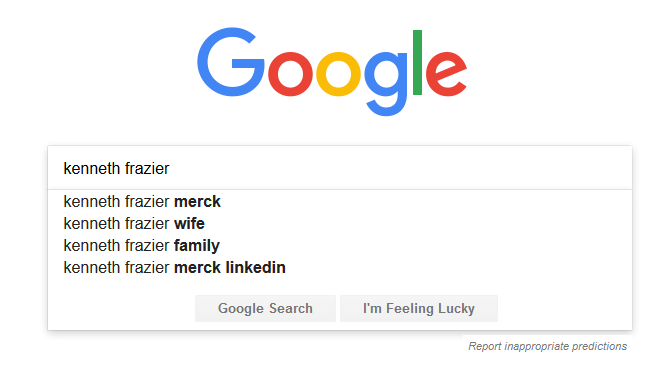
This suggests that when searching CEOs many stakeholders want to know more about them and their families.
With our Fortune 500 clients we will often recommend monitoring each of the suggested quires and ensuring that the brand manages content will satisfy the searchers while making sure to respect the individual’s privacy.
It also may be interesting for companies to analyze the timing associated with the appearance of these search suggestions. Do searchers look at a CEO’s family at a time when they feel confident about the CEO? Is it in crisis? It’s even possible that the appearance of these and other suggestions may be associated with changes in sentiment toward the individual by company and are therefore related to rises or falls in share prices.
If your brand or key executives may need assistance managing your digital reputation – please contact us at services @ FiveBlocks.com.
How One Small Technical Error by Forbes Changed the Reputation of Fortune 500 CEOs… Overnight
New trends in Google search results are typically attributed to changes in Google’s algorithm. Search engines make frequent changes that affect search results; many of which are not known to most users. For example, over the past several months Google reintroduced the ‘Twitter box’ causing Twitter to feature prominently in search results for many brands and individuals. Wikipedia has continued to maintain top positions in search, and is the primary source of information for Google’s Knowledge Panel. Google has experimented with the inclusion of an in-depth articles section, both removing and then reintroducing it. But sometimes, significant changes in Google search results aren’t algorithmic; rather they are the result of outside forces.
At Five Blocks, we track the reputation of thousands of brands and executives and our system alerts us to major changes impacting a large segment of Fortune 500 CEOs. Forbes pages featuring a gallery of relevant images, suddenly disappeared for many of the executives, practically overnight.
All the Forbes image pages seemed to have disappeared.
On June 16th and 19th 2016
On July 5th 2016
All the Forbes image pages seemed to have disappeared.
Initially, we assumed this was an algorithmic change in Google, but when we followed the tracks, it was clear that a human error by a Forbes staff member had resulted in a ripple effect, affecting the search results of many individuals.
What Happened?
Pages on Forbes.com, like many other sites, include code known as a canonical tag. The purpose of this tag is to send a signal to Google that the page you are on is the original content. Oftentimes the same content exists on multiple pages. Thus it is useful to direct Google to the original version.
On or just before June 25th, the URL that the tag began pointing to was the first individual on the list.
In one instance all the individuals on this list had a canonical tag pointing to Ray Dalio:
In another instance, the canonical tag began pointing to Larry Page (of all people!):
Luckily the mistake looks easy to correct and is not likely to have a long-term impact. This example serves as a reminder of the pivotal role that specific prominent publications play in the digital reputations of many executives.
Many factors impact digital reputation. Google’s algorithm certainly plays a central role, but so does launching and maintaining owned sites and content, interacting in social media, and engaging with the press to get the coverage your brand needs. At the same time, it is worth remembering that like many things in our lives, digital reputation is vulnerable to both human and technological error. Tracking your online reputation on an ongoing basis can help you take quick action when a concerning situation does arise.
And who knows, sometimes, writing a blog post and tweeting it out could be what fixes the problem.
Forbes could not be reached at the time of this publication for comment.
How to Change Your Logo in Google Knowledge Graph
Many of our clients are B2B and B2C brands. Their ability to control how their logo appears in Google search results is really important to them. Google has helped these, and other, brands by including their logo as a central element in the Google Knowledge Graph. The ability to dictate exactly which version of the logo is used can be crucial to having the best impact on searchers.
This is how you do it:
- Use your preferred logo as the logo for your brand’s official Google+ profile (use verified name and link to your main website).
- If there is a Wikipedia page for your brand, make sure the logo image is your preferred version.
- Use Schema.org’s organization markup to indicate to Google the preferred logo. Google has said they will honor that (presumably in the absence of a Google+ logo).
FedEx and Fun with Knowledge Graph Logos
Fedex decided to change their logo to a holiday logo version. On or before Dec 11th, they changed the FedEx logo on their Google+ page to the holiday version.
Shortly thereafter, their knowledge graph logo changed as well.
Before:
After:
Meanwhile – FedEx has changed their logo in Google+ back to the standard logo:
But the Google knowledge graph still has the holiday logo on it.
In SEO, they often say “If you don’t like your results, wait five minutes.”
In this case, I would recommend that FedEx also uses Schema.org’s organization markup on their homepage to indicate to Google the preferred logo.
They can also go back into Google+ and change the logo to a new file in the hopes that Google will detect the change and update the knowledge graph image.
Manage Your Identity: Impersonator Accounts on Social Media

Digital reputation management requires vigilance and initiative, on many fronts. Search engine result pages, social media, SEO, PR, and Wikipedia are all realms of one’s online presence that must be actively managed in order to ensure an accurate and favorable representation. One aspect of social media that can be particularly damaging to high profile individuals or brands is the prevalence of false, and often malicious, impersonators.
The anonymity of the internet affords people the opportunity to create fake social media accounts using names of high profile individuals and brands. Often, these fake accounts are inactive; these profiles rarely post any new updates, and they may never be seen by users of the particular social media platform in question. However, these accounts can be damaging regarding search engine results. Search engines may mistakenly identify a phony profile with the actual individual, and then display this result to a user who is searching that name.
Some of these fake accounts are barely fleshed out and clearly nonsensical, but even accounts of this sort can be misleading or confusing for both search engines and real users. Other fake accounts can be more pernicious. These profiles may carry unfavorable images, nasty taglines, or other fields that mock or criticize an individual or a brand.
It is thus imperative for people and companies interested in controlling their online identity to keep an eye on major social media channels for impersonators. Fortunately, the major social media platforms are aware of this problem, and they do offer the opportunity to report false accounts and to request their removal. Note that you may be asked to provide a copy of some form of identity verification, such as a valid driver’s license. With your awareness of this digital reputation threat and by taking active steps in response to any specific incidents, these fake accounts can often be eliminated.
Here are some helpful URL’s which outline steps you can take in each of the major social media channels in order to file a report of impersonation with a request for profile deletion:
http://help.linkedin.com/app/answers/detail/a_id/30200/kw/fake+profile
https://www.facebook.com/help/www/174210519303259
https://support.twitter.com/forms/impersonation
https://support.google.com/plus/troubleshooter/1715140?hl=en
https://help.instagram.com/446663175382270/
In-Depth Articles…but Shallow Market Penetration?
Followers of this blog know that we have been eyeing for months the phenomenon of in-depth articles and their potential impact on reputations of companies and individuals online. First, we watched their appearance last August, then their tentative migration up the results page from their original placement at the bottom and now their wild disappearing and reappearing act.
Through the beginning of this year, things were pretty steady with about 10% of the companies in the Fortune 500 showing results that included in-depth articles. Just at the end of February, however, the fluctuations began, with nearly 20 companies losing their in-depth articles one day, and then some bouncing around.
At the lowest point, nearing mid-March, only 20 companies had in-depth articles, a drop-off of 64% from the 56 that began February!
For now, it looks like Google’s in-depth article experiment is still in progress and it remains unclear where this moving target will land. And while we cannot claim to be in Google’s head to explain what’s going on, we can hazard a guess.
On the theory that Google’s aim is to make search results ever more useful for searchers, we have to wonder how useful these in-depth articles have been. Unlike news results, which can change daily, reflecting changes in the world, or profiles and background pieces (e.g. Wikipedia) useful for reference, we suggest that in-depth articles – lengthy and often with a slant – may not be seeing repeat visits. Moreover, their length makes them time consuming to read, making it difficult for the average searcher to get in, get the gist, and get on to something else.
For all the companies with unfavorable in-depth articles, a shift away from them would be a good turn. Ultimately, though, whether this experimentation means in-depth articles are approaching their sunset – or if something else is on the horizon – is anyone’s guess. Meanwhile, we will continue to monitor the course of Google’s current lab work.
In-Depth Articles Rising From the Depths
It looks as though Google just couldn’t wait to celebrate the six month anniversary of one of its newest search results feature, In-Depth Articles. In the last few days, there has been a subtle but important change regarding the placement of in-depth articles in the Google search results.
Rather than appearing as the bottommost group of results as they have since their introduction on August 7th last year, in-depth articles for a handful of companies (including Dell and Ford, shown below) have been promoted, with some of the organic results now appearing below them.


That’s the subtle part. But why is that important?
The in-depth article box is Google’s way of highlighting long-form journalism and ensuring articles of this type persist in first page results for the increasing list of companies for which they appear.
While the depth of their content makes them relevant long beyond the always-changing news landscape, by and large they are unfavorable portrayals of the companies they’re about. As digital branding consultants, Five Blocks has been closely following in-depth articles for the past six months. For our clients, as well as many of their competitors, in-depth articles are a force to be reckoned with, specifically because they (and their mostly unflattering content) stick around even as other search results on the page come and go.
This latest move by Google to start inching in-depth articles up the page, placing them above some of the organic results, suggests even greater popularity for this type of search result. It also underscores the importance of careful strategic planning to ensure a favorable online brand image. Like it or not, Google’s inclusion and promotion of the in-depth articles means they are an integral part of a brand’s online story. It’s no longer enough to tell your story on your own sites, be socially active, and make the news. The brand story will need to be told by engaging magazines and other long form publications to utilize the opportunity afforded by in-depth articles rather than becoming a victim of them.
PR professionals and corporate communications specialists know that these stories usually take several months to write and photograph, so the path involves planting seeds ahead of time and being willing to own up to missteps as well as successes. For more about the potential impact of in-depth articles on PR and Digital Marketing firms, click here. It follows that the long form article will not be 100 percent positive. Companies need to take a strategic approach and realize that if they warrant one long form article, there will likely be more to follow. Brands should look for opportunities to proactively pitch and place these coveted long form articles with the goal of ‘owning’ at least part of the in-depth conversation about their brand.
Digital Reputation Management: It’s Not All About Burying Results

I posted the following on Business Insider in response to a post that focused on the underbelly of the Digital Reputation Management industry.
Many companies and individuals who have online reputation issues are not trying to bury negative reviews or articles. Instead, they are working to make sure that people searching for them online find what they are looking for. This need often arises when the brand or individual has not made any effort to create an online presence (think either a minimal website or none at all, no participation in social media, no business profiles, no YouTube channel, etc.)
Take for example a financial services firm which mostly arranges M&A’s. An article on a popular business news website portrays a potential upcoming deal for the company in a negative light – probably due to the author’s view of the industry in which the company is involved. The financial services company isn’t active online. They have a one-page website that does not appear prominently in searches online. Most of the prominent mentions of the firm seen in a Google search contain contact information, SEC documents and occasional mentions on investor portals.
The goal of an online or digital reputation management program for this client (and many like it) is to help the client present their brand appropriately online. There really is no need to subvert any search engine algorithm or bury any results.
The Digital Reputation Management program would consist of elements such as:
- Building out the current website so that it is technically sounds and contains content that will help it rank well in search engines.
- Creating company and individual profiles on sites like: LinkedIn, CrunchBase, and others.
- Working with Wikipedia editors to correct any incorrect information appearing in Wikipedia – including providing sources to editors that they can quote.
- Registering the brand and key individuals on social media websites that may be appropriate to use in the future (Twitter, Google+, etc.).
- Working with the client’s communications team (or their external PR firm) on opportunities for publishing thought leadership materials in one or more relevant media outlets.
In short, there are many tools at the disposal of digital band management professionals that, rather than being exercises in removing negativity, are proper digital branding and communication efforts. Rather than focusing on fooling the algorithm (in the long term Google will beat you!), serious companies should be considering digital reputation management strategies and tactics that take advantage of Google’s algorithm and its ability to detect relevant, authoritative content from a variety of sources.
Betting Your Reputation on an Algorithm
 In today’s hyper-competitive business environment, it is challenging for traders and advisors to maintain an edge. Many wealth managers divide their time with conducting industry research, prospecting, managing their clients’ diverse holdings and exploring new opportunities.
In today’s hyper-competitive business environment, it is challenging for traders and advisors to maintain an edge. Many wealth managers divide their time with conducting industry research, prospecting, managing their clients’ diverse holdings and exploring new opportunities.
In the digital age, a new skill has an increasingly forceful impact on their business: digital branding. Brokers and traders need an online presence that communicates their business story.
What is an ‘online presence’? Read More …
Brand Reputation for the FTSE 100 vs. the Fortune 100
Before we can start work aligning a brand’s online reputation to match their corporate objectives, we need to understand something about the playing field.
We need to understand what types of results are typical for brands in the same market. Many of our clients are Fortune 100 and Fortune 500 companies, so we have done extensive research into this market.
Below is a table depicting the frequency with which we find various sites as top ten results in Google’s natural search results. (Data is from Nov 9, 2012).
The number above each bar represents the number of company search results in which each website appears.
As you can see from this chart, the most prevalent result for companies in the Fortune 100 is Wikipedia – appearing in 90% of page one results for Fortune 100 companies.
It’s interesting to note that Facebook and Twitter are each appearing in F100 first page Google results about 25% of the time.
Also interesting is that Yahoo Finance continues to be an important finance site as compared to Google Finance – which does not show up in the top ten.
A takeaway for companies in the space would be to look at the frequently occurring websites and determine if your brand should also have similar results. Knowing that Google tends to “like” showing a specific type of result seems to make it low-hanging fruit – an easy win if it’s something that will help your online reputation.
What about the FTSE 100?
In preparation for a week of meetings in London, we decided to compare the same type of data as seen in Google.co.uk results for the FTSE 100.
In the UK, Wikipedia is even more prevalent. Only 3 FTSE 100 companies have no Wikipedia page appearing in their Google page 1 results! Also noteworthy is the strength of The Guardian as a result shown in the first page Google results for 59% of all FTSE 100 companies! (Note to PR department – The Guardian is more likely to impact online reputation than the BBC, The Telegraph and Reuters combined!). In the UK Markets.ft.com outranks Yahoo Finance in prevalence by a significant margin, with Yahoo Finance still maintaining a significant foothold.
On the social media front, Twitter and Facebook are less than half as likely to be in the Google first page search results for a FTSE 100 company – as compared to a Fortune 100 company.
Notable as well is that neither group has video results coming up with any frequency. Image results show up in 6 of the FTSE 100 search results, but in only 2 of the Fortune 100 first page results.
With this knowledge, we are better prepared to look at FTSE 100 companies – and indeed at company results for other companies in the UK with a better understanding of which sites play significant roles in online reputation. When we approach a client program, we then take the additional step of doing a more exact comparison of the peer group – the companies or individuals that are most similar to the client. This offers further insight as to the way in which Google treats those keywords within the local search market.
‘Disgusting Dominos’ Tops Dominos Searches
One of the great things about Online Reputation Management is that it includes more than just creating some blogs or generating links. It’s a lot about the perception of searchers. How do they view your company? What frame of mind are they in? What can you do to change impressions? The variety of tactics we utilize in repairing online reputations is constantly evolving. Eighteen months ago we hardly touched Twitter; now it’s a staple. Google’s personalized profiles are also a new development – allowing any user to grab the profile page for their name (which shows up instantly just below the Google top ten with a picture).
In this fast-paced environment, we make sure to see and evaluate what happens a week or more after a crisis.
The Domino’s Test
On April 21, 2009 our company decided to run Google Ads in order to gauge the longer-term effects of negative publicity from Domino’s Pizza’s now infamous “disgusting video.” Our test took place more than a week after the release of the famous employees YouTube video.
Aside from over 25,000 impressions, coming primarily from ads appearing on YouTube, we measured over 3,000 searches for the broad term ‘disgusting dominos.’
Domino’s themselves evidently realized that this would be the ‘best’ keyword to capture the crisis and decided to make their YouTube response title: “Disgusting Dominos People – Domino’s Responds”. This was probably at the urging of their SEO expert. While the best way to rank a YouTube video for a keyword is to start the title of the video with your keyword, I would argue that the negative aspect of having the CEO’s picture under the title “Disgusting Dominos” is a reason to veer away from this tactic. Instead, I would have recommendeded “Dominos CEO responds to Disgusting Dominos People Video.” The actual video file should probably have been called “Disgusting Dominos” as we have seen empirically the effects of the file name itself outweighing the video title. Using the keyword as the title of the video file is very helpful in making sure the video shows up in YouTube for your keyword.
Disgusting Domino’s – the Top Keyword for the Domino’s Crisis in Reputation Management
We noted that throughout our test, Domino’s Pizza themselves did not seem to be running any Google Ads – possibly a missed opportunity to reassure searchers that Domino’s is aware of the issue and is proactively dealing with it.
Note: Domino’s is a trademark of Domino’s Pizza. This site is not related to Domino’s in any way.
Domino’s Pizza Retrospective: Why PR Must Own the “Google Top Ten” in Today’s Era of Online Reputation Management
This piece was written by David Goldman and originally appeared in the Daily Dog on April 27, 2009.

PR firms are responsible for their client or company’s reputations. Similar to the Domino’s fiasco, if a negative video or blog reaches into the top ten of Google search results for a client’s brand name, it’s called a “PR problem.” So why aren’t PR firms called on more often to fix the problem with their client’s online reputation?
One answer is that most people assume that Google search results are like the weather. We have the tools to measure them and possibly predict them, but we can’t change them. Fortunately, the situation isn’t that bad. Experienced online reputation management (ORM) firms working in tandem with PR firms can control a client’s search profile. The best way to get rid of negative results on Google is to take control of your reputation online. Another answer is that online reputation management should belong to the client’s SEO firm. This is a missed opportunity for PR and oftentimes untrue.
Progressive agencies are taking ORM seriously, partnering with firms or making internal hires to accommodate the growing need for bridging their traditional and even online efforts to ORM services. They realize that PR firms are competing with SEO companies to provide these services and understand the strategic as well as the financial sense in getting there first. Agencies should understand that they are often creating the message and image of the brand while SEO firms are technology people.
The Domino’s Case Study—Timely ORM Tips to Consider
Just over a week after the Domino’s “PR Nightmare,” many communications professionals are asking two questions: What can the brand do to salvage its reputation after the fact? And what can we do to prevent our clients from a similar crisis? Here is how our firm would work with Domino’s PR to clean up the mess:
There are at least three things that Domino’s Pizza should be doing now to clean up their online reputation. Although the buzz around the infamous video will continue to wane, the postings and marketing articles about the incident have the potential to linger for months, possibly years, unless the brand takes action. If you’re Domino’s, here’s what you need to do today:
1. Tweet to a stronger presence online. A company that is such an important part of American culture should be actively creating positive buzz online. Domino’s didn’t even have a Twitter account until after the crisis broke.
Pizza Hut recently posted a job offer for a summer intern to work on their Twitter account (see the posting here: http://news.cnet.com/8301-17852_3-10223100-71.html). That’s the type of planning that helps soften a social media crisis when it arises. With 125,000 employees at their disposal, Domino’s could easily distribute an internal memo advocating that employees open Twitter accounts and post positive comments about the work environment and the company. Twitter is one of the fastest ways to have a positive impact on a brand. Domino’s employees have a real interest in making their brand popular and keeping it strong. This will not only help supplant the negative content from the top search results in time, but help prevent a future crisis as well.
2. Develop and execute a video strategy. Currently, most of the videos that appear on YouTube and video-sharing websites for the keyword “dominos” are not about Domino’s Pizza. Had Domino’s occupied the top ten spots on YouTube for the keyword “dominos,” the effects of a rogue negative video would have been greatly mitigated. There was a lost opportunity as the millions of searchers for the keyword “dominos” could have also been exposed to positive messages from the brand in the form of videos.
In addition, the brand’s TV commercials should be systematically re-posted and optimized so they occupy the top spots for video searches of the word “dominos.” Management should also ask employees to create YouTube videos promoting the brand, empowering the employees to feel like they are part of the solution, not only the problem.
3. Go “deep”—leverage mini-sites. Domino’s probably thought that by having a consumer-focused website and a corporate homepage they had their bases covered. In truth, their web presence is shallow.
Creating mini-sites on a few important topics can garner excellent PR while protecting the brand’s online reputation. Some topics Domino’s could consider for mini-sites: a) Passion for Pizza (The Internet is the perfect medium for expressing the passion you have for your product or service.), b) Domino’s and the Environment (focusing on recycling or other green initiatives), and c) Domino’s Scholarships (or Domino’s Community Projects). Each of these mini-sites can occupy a top spot in the Google results if created and optimized by ORM experts.
The Bigger Picture—Why PR Must Own ORM
All of these suggestions are facets of a full-service online reputation management program. When ideas like these are implemented together with a program of reputation management focused on positive articles and links, a negative situation can be transformed into a reputation-building opportunity.
Although Online Reputation Management (ORM) has existed for several years, today the need for this service is more relevant than ever. It isn’t a question of whether companies need and seek this type of service anymore. The real question is: To whom will they turn?
We have met with many PR firms in the U.S. who offer a “blogging strategy,” creating and maintaining an optimized corporate blog for their clients. While this is an excellent first step, online reputation management requires much more than one well-run blog. These firms often subscribe to outside services in order to track their client’s reputation online, but rarely do they offer a solid measurable solution.
So what is the better model?
Answer: Stop offering blogs and start offering “search profile optimization.” A search profile is essentially what someone sees when they search for your client’s brand or product name; it’s the “Holy Grail of Search;” it’s the Google top ten. Today, there are several ORM firms with whom agencies and consultants can partner—offering a white-label solution to their clients to improve their search profiles. The ORM firm provides charts and graphs that track the progress of their work for the PR firm to merchandise back to the client with their ‘look and feel.’
There are methods (especially for clients who are vulnerable to the “Domino’s Effect”) that can greatly reduce the collateral damage of a scandal before it takes place. By “owning” the Google top ten before a crisis breaks out, PR firms can effectively prevent a catastrophe. On a brand’s marketing team, only the PR firm knows when the bad news is coming. Whether it’s layoffs, a poor earnings report or a discrimination lawsuit, this knowledge can be used to minimize damage to the brand by securing the Google top ten in advance of the negative announcement.
Providing ORM services for clients is a way for PR firms and crisis communications professionals to stay vital to their clients and gives clients another reason to stick with their agencies. In this uncertain economy, every PR professional should be finding new ways to increase revenues and retain their clients. Offering ORM services allows PR firms to do both.

